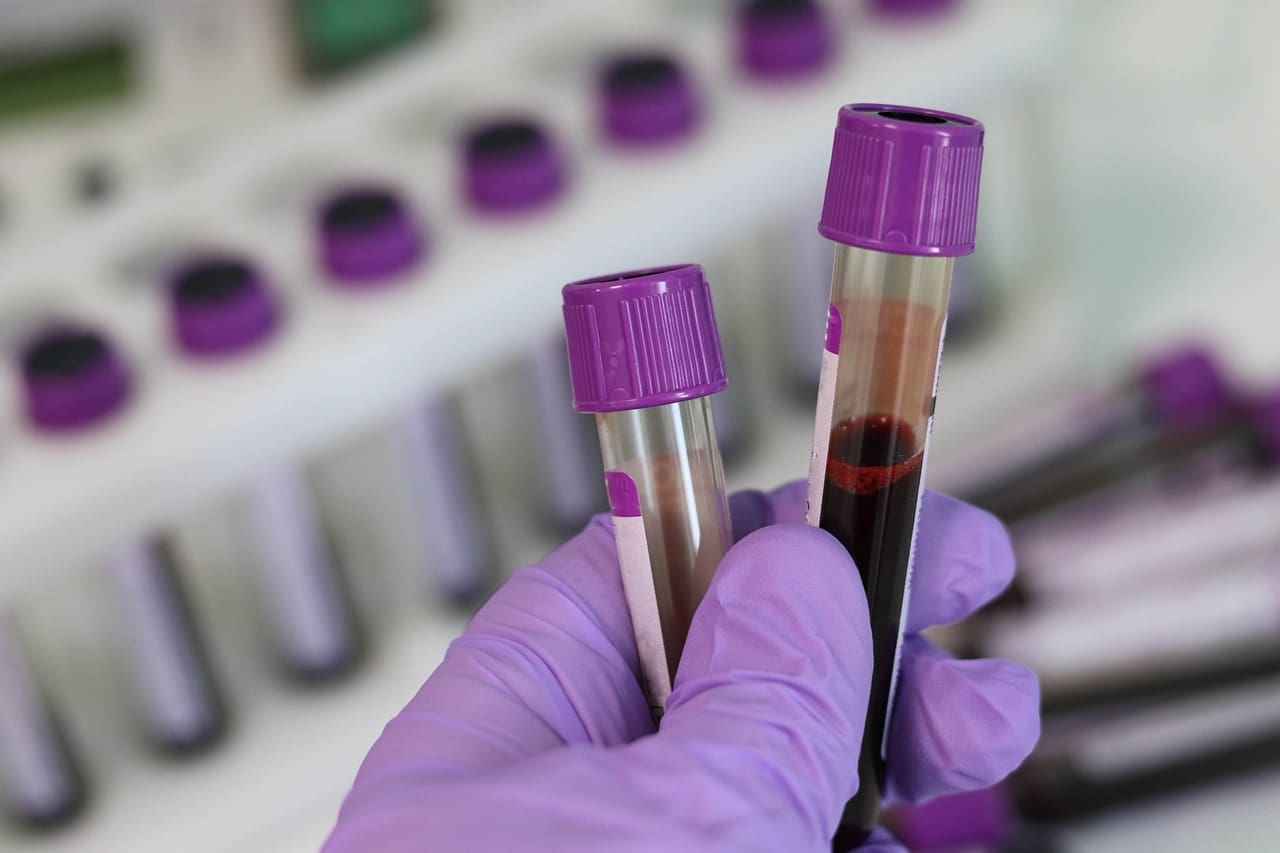Partial Thromboplastin Time (PTT) and activated Partial Thromboplastin Time (aPTT) are two types of medical tests that evaluate and characterize blood coagulation.
With the help of these tests, medical experts can evaluate bleeding and coagulation disorders and the intrinsic pathways of various coagulation factors.
In the aPTT test, an activator is added, while in the PTT test, there is no activator.
Key Takeaways
- PTT stands for Partial Thromboplastin Time, and APTT stands for Activated Partial Thromboplastin Time.
- PTT measures the effectiveness of the intrinsic and common coagulation pathways, while APTT measures the same pathways along with the effect of heparin on blood clotting.
- PTT is used to monitor treatment with unfractionated heparin, while APTT is used to monitor treatment with low molecular weight heparin.
PTT vs aPTT
PTT is a blood test that measures the time it takes for blood to clot. It is used to monitor the effectiveness of the blood-thinning medication heparin. APTT is a similar blood test that measures the time it takes for blood to clot after a substance called an activator is added to a blood sample.

In simple words, PTT is a medical test that is conducted to evaluate the total time it takes in a person for the blood to clot.
These help to diagnose several bleeding disorders, such as haemorrhage and thrombosis. For the PTT test, oxalate or citrate is added to a test tube in which the blood sample is collected.
aPTT is also a medical test for blood coagulation, but instead of measuring the time taken for blood clotting, it evaluates the clotting factors of the intrinsic pathway.
An activator is used in this test to make the clotting time faster, and it is also more sensitive to heparin therapy.
Comparison Table
| Parameters of Comparison | PTT | aPTT |
|---|---|---|
| Definition | PTT is a type of test that measures the time taken for blood clotting to diagnose coagulation disorders. | aPTT is the test of activated blood coagulation that measures the effectiveness of heparin. |
| Significance | PTT mainly evaluates both the quantity and the performance of several proteins that are known as coagulation factors. | aPTT investigates clotting factors I (fibrinogen), II (prothrombin), V, VIII, IX, X, XI, and XII. |
| Functions | PTT primarily acts as a probe for unexplained bleeding or clotting in any body parts. The test helps in assessing hemostasis. | aPTT is used as a medical screening test to evaluate the intrinsic pathways of the clotting factors. |
| Clotting Factors | PTT evaluates and measures the clotting factors VIII, IX, X, and XII. | aPTT evaluates and measures the clotting factors V, VIII, IX, X, XI, and XII. |
| Heparin Sensitivity | PTT is less sensitive to heparin which is an anticoagulant. | aPTT is more sensitive to heparin as compared to PTT. |
| Reference Range | 60-70 seconds is the reference range of PTT and it is the regular time of blood clotting. | 30-40 seconds is the reference range of aPTT and it is narrowed by adding an activator. |
| Critical Values | If the PTT value exceeds 100 seconds it implies spontaneous bleeding. | If aPTT value exceeds 70 seconds it implies spontaneous bleeding. |
What is PTT?
PTT is a medical test to measure the time for blood to clot. A PTT test checks the functions of specific coagulation factors if any of these are missing or showing abnormal behaviour.
The most common bleeding disorder is haemophilia. So, PTT helps in finding out if there is excessive bleeding or excessive blood clot.
There are several reasons why one should take a PTT test. If a person suffers from heavy bleeding or is bruised easily should take a PTT test. Many people have a blood clot in a vein or artery which increases the risk of heart attacks and strokes.
PTT tests can analyze multiple body disorders only by evaluating the clotting time.
For example, it can diagnose any liver disease, vitamin K deficiency, and autoimmune diseases like lupus anticoagulant syndrome.

What is aPTT?
aPTT is also a blood coagulation test that investigates the coagulation factors of the intrinsic pathways.
In this test, an activator is used to narrow the blood clotting time to 30-40 seconds. An aPTT test can find out how different clotting factors work in a person’s body.
This test is very useful for monitoring blood coagulation in those who are undergoing heparin therapy. Large doses of warfarin might affect the results of this test.
So, it is also wise to consult a medical expert before undergoing this test.
aPTT test is a much-advanced test for blood coagulation performance, and thus it has replaced many PTT tests.
Decalcified blood is used for this test, and it can diagnose the deficiency of coagulation factors V, VII, IX, X, XI, and XII in the blood.

Main Differences Between PTT and aPTT
- PTT is a type of test that measures the time taken for blood clotting to diagnose coagulation disorders. On the other hand, aPTT is the test of activated blood coagulation that measures the effectiveness of heparin.
- PTT mainly evaluates both the quantity and the performance of several proteins that are known as coagulation factors. But, aPTT investigates clotting factors I (fibrinogen), II (prothrombin), V, VIII, IX, X, XI, and XII.
- PTT primarily acts as a probe for unexplained bleeding or clotting in any body parts, whereas aPTT is used as a medical screening test to evaluate the intrinsic pathways of the clotting factors.
- PTT evaluates and measures the clotting factors VIII, IX, X, and XII, whereas aPTT evaluates clotting factors V, VIII, IX, X, XI, and XII.
- PTT is less sensitive to heparin, an anticoagulant, whereas aPTT is more sensitive to heparin than PTT.
- 60-70 seconds is the reference range of PTT and the regular time of blood clotting. But, 30-40 seconds is the reference range of aPTT, and it is narrowed by adding an activator.
- The critical value of PTT is 100 seconds, whereas, for aPTT, it is 70 seconds.




